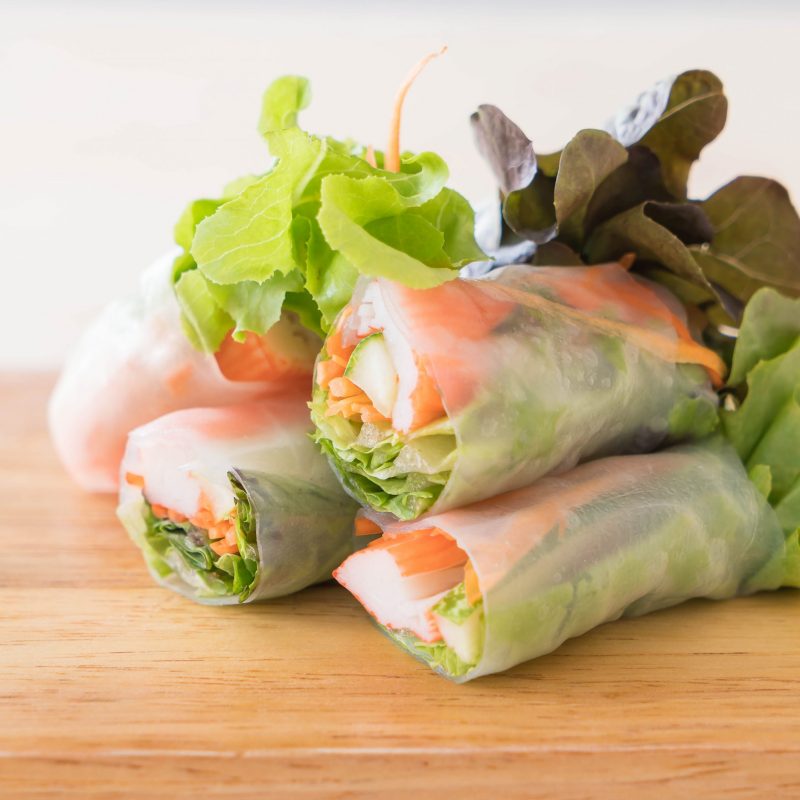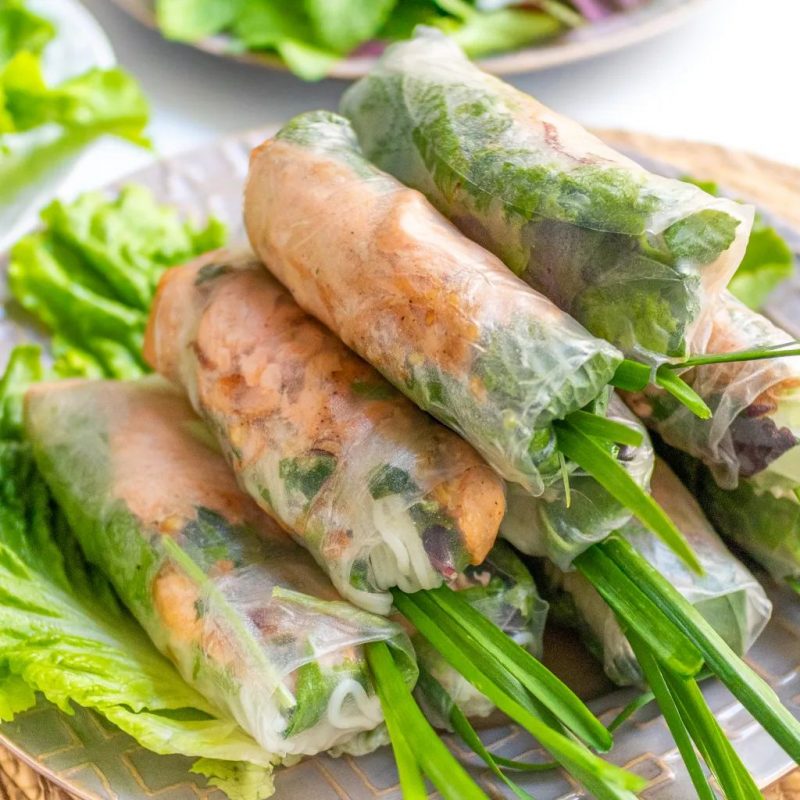Rice paper rolls – often called Vietnamese spring rolls or gỏi cuốn – offer everything you want in a quick, healthy meal. In this guide, you’ll discover how to make rice paper rolls at home with simple ingredients and smart techniques. Follow along and master a classic that never goes out of style.

Why Are Vietnamese Rice Paper Rolls So Popular?
Before we jump into the rice paper rolls recipe, it helps to know why people worldwide adore them. Each roll showcases fresh herbs, crisp vegetables, tender protein, and silky vermicelli, all wrapped in translucent rice paper. The result is a balanced bite that’s light yet satisfying. Better still, every roll is customizable—swap shrimp for tofu, add mango for a tropical twist, or keep it strictly plant-based. Versatility and freshness make Vietnamese rice paper rolls a perennial favorite.
What You’ll Need
Quality ingredients lay the foundation for delicious rolls:
- Rice paper (bánh tráng)
- Protein – cooked shrimp, boiled pork, grilled chicken, or marinated tofu
- Rice vermicelli noodles – soaked and cooled
- Fresh herbs – mint, basil, cilantro
- Vegetables – lettuce, cucumber, carrot, bean sprouts
- Dipping sauce – peanut-hoisin or classic fish sauce with lime and chili
Arrange everything on a platter before you start rolling; organization keeps the process smooth.

Step-by-Step: How to Make Rice Paper Rolls
1. Prepare the Fillings
Wash the herbs and vegetables thoroughly, then pat them completely dry to keep the rolls crisp. Slice cucumber, carrot, and your chosen protein—shrimp, pork, or tofu—into thin, even strips for easy layering. Set everything on a large platter so you can see and grab each ingredient without breaking your flow.
2. Soften the Rice Paper
Fill a wide bowl with warm (not hot) water; extreme heat makes the sheets fragile and sticky. Dip one rice paper sheet for just three to five seconds until it loosens and turns slightly translucent. Lay the softened sheet flat on a damp cutting board or clean towel to prevent tearing and sticking.
3. Layer the Ingredients
Place a lettuce leaf near the lower third of the rice paper to act as a cushion. Add a small bundle of vermicelli, a few herb leaves, and the sliced vegetables in a tidy row. Finish with two or three protein strips, keeping the mound compact so the roll can close neatly.
4. Fold and Roll
Fold the left and right edges inward first, locking the filling in place. Lift the bottom edge over the mound, tucking it snugly to create tension without tearing. Continue rolling upward until the seam seals, producing a firm, cylindrical rice paper roll.
5. Serve with Sauce
Arrange the finished rolls on a plate and cover them with a slightly damp cloth if you’re not serving right away. Whisk together hoisin, peanut butter, and a splash of lime—or use classic fish sauce with chili—for a balanced dip. Present the rolls whole or cut in half, and enjoy immediately for the freshest flavor and crunch.

Tips for Extra-Delicious Results
- Don’t oversoak rice paper; pliable is perfect, soggy is fragile.
- Keep herbs chilled so they stay crisp and aromatic.
- Lightly wet your fingertips while rolling to prevent sticking.
- If preparing ahead, wrap finished rolls in plastic film and store in the refrigerator for up to two hours.
Beyond the Recipe: A Taste of Vietnamese Culture
Making fresh spring rolls isn’t just about eating well it’s about gathering. Families and friends often roll together at the table, turning meal prep into a shared experience. Every dip in peanut sauce tells a story of Vietnamese hospitality and culinary craft.
Now that you know how to make rice paper rolls, you can bring authentic Vietnamese flavor to any kitchen. From weeknight dinners to party platters, these rolls embody freshness, balance, and endless creativity. Try your own variations, share with friends, and enjoy a dish that’s truly global yet unmistakably Vietnamese.


